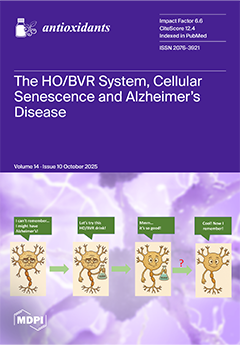Parturition is a critical event in the reproductive cycle of dairy animals, accompanied by multiple physiological changes in sex hormones, metabolism, antioxidant capacity, and immune function. However, the changes in the rectal microbiota and metabolic products of Jennies from late gestation to parturition affect serum antioxidant capacity and anti-inflammatory responses, but it is still unclear. The present study aimed to investigate the serum antioxidant capacity and anti-inflammatory responses of Dezhou donkeys from late gestation to parturition by analyzing rectal microbiomes and serum metabolomics. Nine pregnant multiparous Dezhou Jennies, aged 6.0 ± 0.1 years, with a body weight of 292 ± 33 kg, an average parity number of 2.7 ± 0.1, and similar expected dates of confinement (35 ± 4 days), were selected for this study. The study investigates the changes in antioxidant capacity and inflammatory responses, as well as the alterations in rectal microbiota structure and serum metabolites, in Jennies at 35 days prepartum (B1), 7 days prepartum (B2), and at 0 h postpartum (B3). The results showed that from groups B1 to B2, serum activity of GSH-Px, IL-10, and GLU concentrations were decreased significantly. In contrast, the concentrations of MDA, IgG, LF, IL-1β, IL-2, IL-6, TNF-α, and ROS increased significantly. From groups B2 to B3, serum activities of GSH-Px, CAT, SOD, and T-AOC, as well as the concentrations of MDA, IgG, IL-2, AST, ALP, and BHBA, were significantly increased, whereas the concentrations of IL-4, IL-10, and CRE decreased considerably. Therefore, from 35 days prepartum to parturition, Jennies experienced a gradually intensifying oxidative stress and inflammatory states, with the inflammatory response being the most severe at parturition, and with enhanced antioxidant capacity corresponding to increased oxidative damage. Microbiome analysis revealed that the group B1 significantly increased the relative abundance of
Prevotella and
Fibrobacteres. Group B2 significantly increased the relative abundance of
Prevotellaceae_UCG-001,
Streptococcus, and
Acetitomaculum. Group B3 showed a significant upregulation of the relative abundance of
Norank_f__F082,
Lachnospiraceae_UCG-009, and
Prevotellaceae_UCG-004. At the same time, metabolomics analysis revealed that, compared with group B1, group B3 may alleviate inflammation and enhance the body’s antioxidant function by upregulating the tryptophan and arginine metabolic pathways and enriching the differential metabolites (L-tryptophan, L-kynurenine, 3-Indoleacetonitrile, N-acetylglutamic acid). Concurrently, the elevation of these differential metabolites may be associated with the relative abundance of the beneficial bacterium
Lachnospiraceae_UCG-009. However, the increase in LysoPC, a fatty acid oxidation product in glycerophospholipid metabolism, as well as the correlation between the sucrose content in the galactose metabolic pathway and the abundance of
Paracoccus, indicates the reason why the Jennies are in a state of oxidative stress. Furthermore, group B1 may enhance the serum anti-inflammatory response in Jennies during late gestation by increasing the levels of estrogen in the steroid hormone biosynthesis metabolic pathway. These results could provide useful information for improving the health levels at the specific physiological stages and processes in Dezhou donkeys.
Full article






